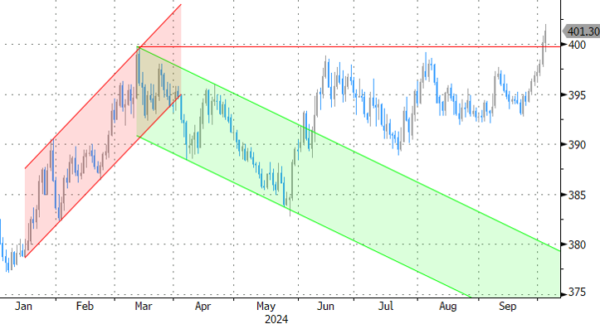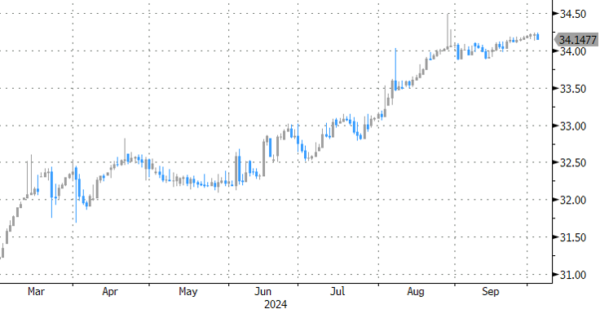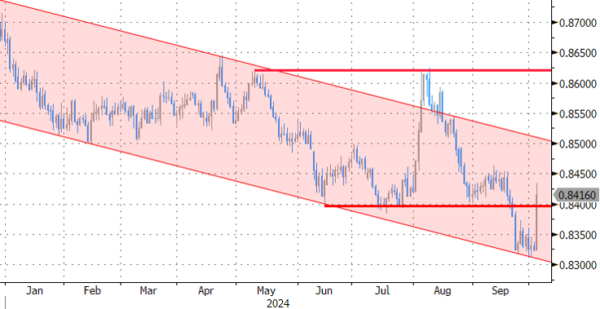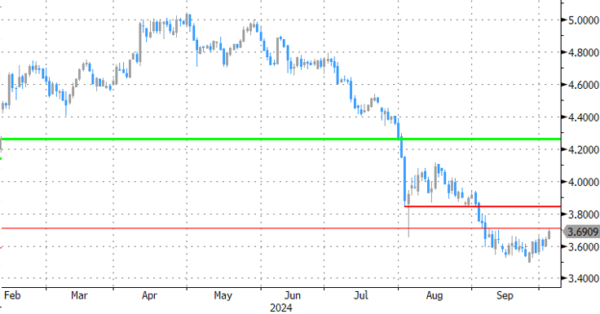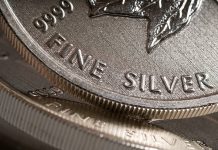Markets
An interview of BoE Governor Bailey in The Guardian changed (relative) prospects for UK yield markets and sterling. Until now, markets expected the BoE to keep a cautious approach on easing as (especially underlying) inflation proved sticky, raising doubts the BoE would be able to reach its 2.0% target in a sustainable way anytime soon. Still, Andrew Bailey now flags the BOE could become a bit more activist/aggressive when on rate cuts if inflation data remain good. Bailey also said that cost-of living pressures turned out less persistent than the BoE feared. The BoE Decision Maker Panel survey (DMP) published today, admittedly only one source on inflation (expectations), at least didn’t signal a faster decline. Firms saw their output prices an average 4.2% Y/Y higher in the three months to September (4.0% August). Year-ahead own price growth is seen unchanged at 3.6%. CPI inflation expectations for the year ahead declined marginally (2.6% from 2.7%). Whatever, UK rates in a steepening move declined between 5 bps (2-y) and 0.5 bps (30-y). A November cut remains fully discounted and markets now see a 75% chance of a back-to-back December cut (from <50%). Sterling is losing its status as a ‘high-yield safe haven’. EUR/GBP jumped from the 0.833 area to currently trade near 84.15. For cable, 1.34 levels still in vogue on Monday, suddenly are very far away (1.31). Sterling from now will likely follow an asymmetric data dependent reaction function similar to the euro and the dollar, with weak data having most impact.
Core bond markets (EMU and the US) and equities were in a (mostly controlled) ‘selling’ modus. The Eurostoxx 50 is ceding 0.8%. S&P 500 declines 0.2% Oil stays well bid (brent $75.3) as markets await next developments in the Middle East conflict. For now this doesn’t cause safe haven buying of core bonds. EMU (and US) yields are looking for a bottom (German 2-y +5.0 bps, 30-y +6.5 bps). Dovish comments from (often hawkishly oriented) ECB’s Schnabel yesterday only had limited impact as back-to back 25 bps rate cuts for October and December are discounted. In the US, jobless claims remained low (223k). The services ISM was strong. The headline index unexpectedly jumped from 51.5 to 54.9. Most subindices confirmed this trend, also the price data (new orders 59.4 from 53.0, business activity 59.9 from 53.3, prices paid 59.4 from 57.3). However, a very important one walked the opposite way (employment falling from 50.2 to 48.1). Still US yields extended intraday gains rising between 6.0 bps (5-y) and 3 bps (30-y). USD gains again stay modest (DXY 101.88 from 101.60, EUR/USD 1.1035 from 1.1045, USD/JPY 147.0 from 146.5).
News & Views
Turkish inflation eased from +51% in both the headline and core gauge to a little over 49% in September. The drop is an important milestone: with the policy rate at 50% real rates have thus turned positive for the first time in more than three years. Inflation nevertheless was stronger than expected. The 2.97% monthly reading easily topped the 2.20% analysts’ estimate. The rise from August (2.47%) also resulted in an uptick of the three-month rolling average to the highest since May. Sharply rising education prices (+14.2% m/m) were to blame. In the minutes of the September 19 meeting published last week, the CBRT bank flagged the matter (alongside transport services) as keeping services inflation stubbornly strong, but that didn’t prevent CBRT from dropping an explicit commitment to raise rates if necessary. This dovish twist opened up the debate on a first rate cut only to be overtaken by reality two weeks later. USD/TRY drops a tad intraday on TRY appreciation but remains near record highs around 34.2.
Swiss inflation eased further in September and now ventures in the lower part of the 0-2% Swiss National Bank (SNB) target band. A monthly 0.3% drop pushed the yearly figure down from 1.1% to just 0.8%. Both missed expectations (-0.1% m/m and 1% y/y). Core inflation was 1%, missing the 1.1% analyst estimate as well. Headline inflation was about in line with the SNB’s recently sharply downgraded forecasts of an average 1.1% in Q3 though. But that also means SNB projections of mere 0.5% inflation through 2025 remain intact. It validates the statement noting that more cuts after last week’s one (to 1%) may be necessary. Despite the data, the Swiss franc only eased temporarily today with a fragile risk environment (geopolitical tensions) triggering some safe haven flows on FX markets. EUR/CHF trades near opening levels just south of 0.94. In addition, SNB has less room left to ease policy further compared to the ECB and Fed (assuming a zero lower bound). That’s giving the CHF a relative rate advantage. SNB president Schlegel this week didn’t rule out returning to negative rates but markets don’t buy that currently.
Graphs
EUR/HUF: forint weakens beyond 400 mark on global risk-off and as Hungary is facing new legal battle with the EU.
EUR/TRY: Turkish lira holding near all-time lows against the dollar even as CBRT real policy rate turns positive.
EUR/GBP jumps back north of 0.84 as BoE’s Bailey sees room for more activist rate cuts.
US 2-y yield rebounds off recent lows as data mute the debate on additional 50 bps Fed steps (for now).




